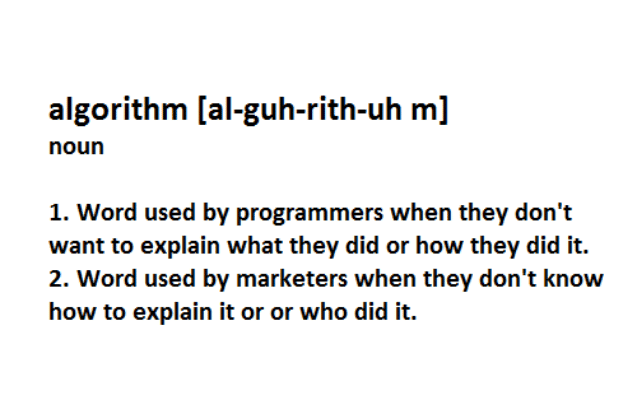You hear people throw around big data in HR and employee engagement algorithms as their secret sauce to describe how their platform improves your employee engagement metrics associated with your employee app. But, one has to think if a lot of thought and effort went into said “algorithm”. Assuming they really have one, when applied correctly, can they do the heavy lifting of taking complex data sets and calculations, analyzing them, identifying patterns and trends, and then creating optimal models that help us understand the information in ways not previously considered. Do they indeed give “sight” to the word “insight”?. As HR professionals and internal marketers, we can use employee apps and software that has algorithms to help us achieve our stated objectives. But because there are so many software platforms out there, it’s important to note that the quality of the output is not only dependent on the data you are collecting and putting through but on how the software is helping you analyze the data – in other words, the difference is in the algorithm.
In the simplest of examples to illustrate this point, it’s why we have many different kinds of search engines available to us. Back in 1998, when two Stanford Ph.D. students were trying to create a scalable bot that would crawl the internet and rank pages based on relevancy, they indeed wrote an algorithm that would crunch that data from the results of a query and provide a rank of the most relevant web hits. They called this Page Rank. It was of course Google, and they could show very easily how their search results were different than that of Yahoo, AOL, Alta Vista, or anyone else at the time playing in the space. The difference was indeed in the algorithm.
Let’s bring this into the context of mobile engagement now. Mobile engagement produces an immense amount of data byproducts. Typically we don’t pay much attention to it. But we should. Because it can reveal a lot about what our employees think and really care about. We can learn about their behaviors, work ethics, knowledge, advocacy intent, feelings, and much more. It’s not intrusive by any means, because the data that is being collected is being used to create a richer, more relevant environment for them to experience. And of course, it’s going to benefit both the company and the employee.
Typically, here is how we look at the mobile employee app model:
- First, come up with a set of initial segments based on usual grouping patterns in companies (divisions, sub-divisions, roles). Then we target content to these groups and try to engage.
- Then, we look at the engagement metrics for these segments. Break these segments into more granular ones to see how the same data changes.
- Re-create segments to group employees based on activity, performance (based on knowledge scores), satisfaction, engagement levels, and advocacy. Re-target these segments to improve those specific metrics that are lacking.
- Finally, use a robust mathematical model that can then give us a good idea of what we can expect for the future (employee engagement, turnover, etc.). A lot of times we think of these as forecasts.
Picking the right platform that automates the algorithm for your tasks at hand is the key. If the algorithm does not analyze data dynamically and instantly, you may not be able to act in time to address a specific situation in your company. As HR and internal marketing professionals, we tend to default classification, segmentation (cluster of similar types), and association (commonality in attributes) to what was being done forever – i.e. use regular static groups or divisions like marketing, sales, technology, engineering, etc. Don’t pigeonhole yourself to these. For example, you may want to target all the millennials in the company or the baby boomers, or those who are least engaged to give them relevant information and incentives for engagement. Then as they dynamically move to other segments based on their change in their metrics, they’ll get re-targeted – thus improving your outcomes further.
Closed-loop, integrated frameworks such as CoIL Engagement have nifty algorithms where you can easily adjust parameters to meet your insight needs. Contact us to learn more and see this in action.














